12 most nutrient dense foods you can grow at home
Store bought produce isn’t as nutritious as it used to be. Showing a steady decline since the 1950s, modern farming practices have valued the size, yield, growth rate, and pest resistance of fruits and vegetables over and above basic nutrition.
You would need to eat eight oranges today to obtain the same amount of vitamin A as a single orange would have provided just two generations ago.
The main causes of nutrient loss are growing foods in soil that is depleted in nutrients, cultivating fast growing varieties that are harvested before maturity, as well as the “dilution effect” – a phenomenon where the larger the fruit and the more produce the plant itself yields, the less protein, amino acids, minerals, and vitamins are available in the harvested food.
Sadly, the average vegetable purchased in the supermarket today contains anywhere from 5% to 40% less nutrition.
When we grow our own food, however, we have much more control over the process. We can enrich the soil with organic matter, we can harvest food when it reaches peak maturity, and we can choose to grow cultivars that give us the most nutritional bang for our buck.
How Is Nutrient Density Measured?
Before all else, foods should be functional and provide us with the micro and macro nutrients we need to keep us alive, create and repair cells and tissue, and prevent or reduce the instances of chronic disease.
Nutrient dense foods are defined as those that have the fewest amount of calories for the most nutrition. A nutrient score is calculated by determining the mean percent of the daily value (DV) for 17 nutrients (such as fiber, potassium, vitamin C, etc.) per each 100 grams of food.
If a food was particularly rich in one nutrient but contained little else, its DV was capped at 100 to prevent skewing the overall results.
According to the 2014 study Defining Powerhouse Fruits and Vegetables, researchers analyzed the nutritional values for 47 foods and assigned scores to each. The results are pretty surprising…
12 Most Nutrient Dense Garden Crops
1. Watercress – 100 / 100
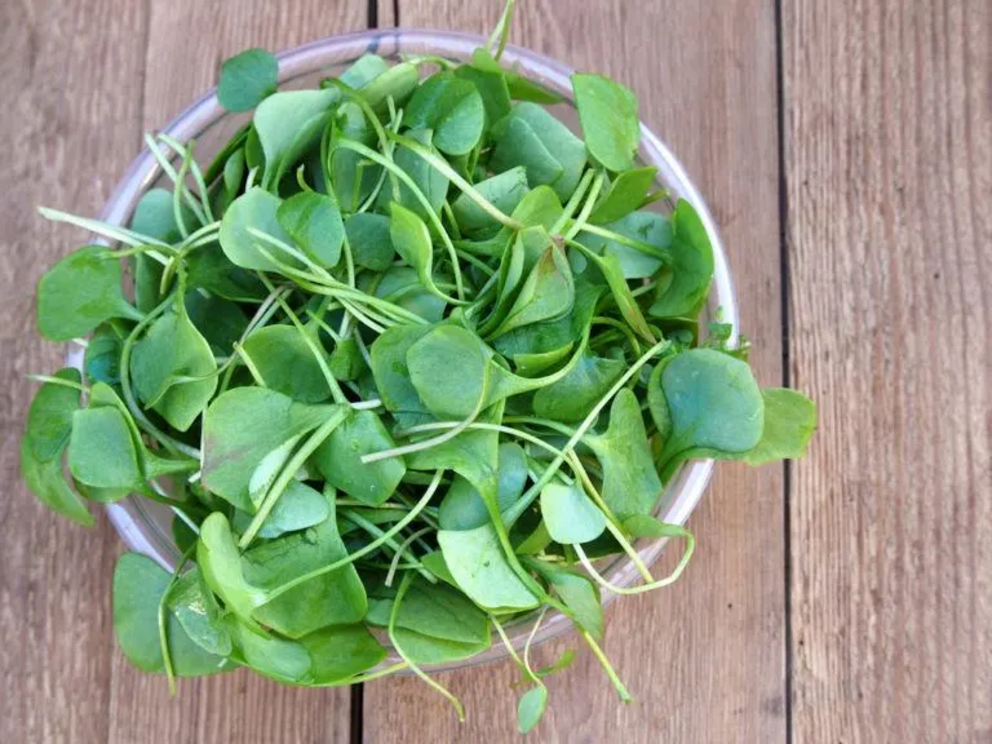
Watercress (Nasturtium officinale) is a fast growing, semi-aquatic plant that forms bushy colonies in flowing streams. Its green rounded leaves and hollow stems have a peppery taste.
With a perfect nutrient density score, watercress is very low calorie but provides an insane amount of nutrients per cup:
- Calories – 3.7
- Vitamin K – 106% of the DV.
- Vitamin C – 24% of the DV.
- Vitamin A – 22% of the DV.
- Calcium – 4% of the DV.
- Manganese – 4% of the DV.
- Potassium – 3% of the DV.
Watercress also contains smaller amounts of B vitamins, magnesium, phosphorus, copper, iron, and zinc.
Although watercress is an aquatic plant, it can be easily adapted to home gardening setups. If you have a water feature in your yard – such as a running stream – that would be a perfect spot. If not, there are plenty of options for enjoying fresh watercress.
You can create a bog in your backyard by digging a shallow hole and covering with pond liner. Or you can grow them in pots using a soilless mix and ensuring the soil is always moist. Watercress is a great micro green, which can be grown indoors and harvested while they are young sprouts.
2. Bok Choy – 91 /100

A type of Chinese cabbage, bok choy (Brassica rapa var. chinensis) is a cruciferous vegetable within the mustard family. It is mild in flavor, with crisp white stalks and tender green leaves that are a wonderful addition to soups, salads, and stir fries.
Bok choy is an excellent source of several important nutrients.
- Calories – 9.1
- Vitamin A – 63% of the DV.
- Vitamin C – 52% of the DV.
- Vitamin K – 40% of the DV.
- Folate – 12% of the DV.
- Calcium – 7% of the DV.
- Vitamin B6 – 7% of the DV.
Bok choy is a biennial crop that can tolerate cooler temperatures to USDA zone 4. It grows best in a partially shaded spot that receives 3 to 5 hours of sunlight each day. There are many varieties of bok choy, but most are ready to harvest in 45 to 60 days.
3. Swiss Chard – 89 / 100

Swiss chard (Beta vulgaris subsp. vulgaris) is a leafy green vegetable with vibrant stems that range in color from white to yellow to red, depending on the cultivar.
Each cup of Swiss chard is rich in micronutrients:
- Calories – 6.8
- Vitamin K – 374% of the DV.
- Vitamin A – 44% of the DV.
- Vitamin C – 18% of the DV.
- Magnesium – 7% of the DV.
- Manganese – 7% of the DV.
- Potassium – 4% of the DV.
- Iron – 4% of the DV.
- Copper – 3% of the DV.
Requiring full sun to part shade, Swiss chard is a cut and come again plant that can be harvested continually throughout the season.
4. Beet Greens – 87 / 100

Closely related to Swiss chard, beetroot (Beta vulgaris) is definitely a medicinal food. While it is best known for its swollen red taproot, the leafy beet greens that grow above the soil are rife with vitamins and minerals too.
Eaten raw or lightly sautéed, beet greens are tender and have a slightly earthy taste.
Per cup serving:
- Calories – 8.4
- Vitamin K – 190% of the DV.
- Vitamin A – 48% of the DV.
- Vitamin C – 19% of the DV.
- Potassium – 8% of the DV.
- Magnesium – 7% of the DV.
- Manganese – 7% of the DV.
- Iron – 5% of the DV.
Beetroot, beet greens, and Swiss chard are also a source of betalains, an antioxidant unique to members of the Caryophallales family.
Beets are non-fussy and really easy to grow –it’s like getting two great crops in a single plant.
5. Spinach – 86 / 100
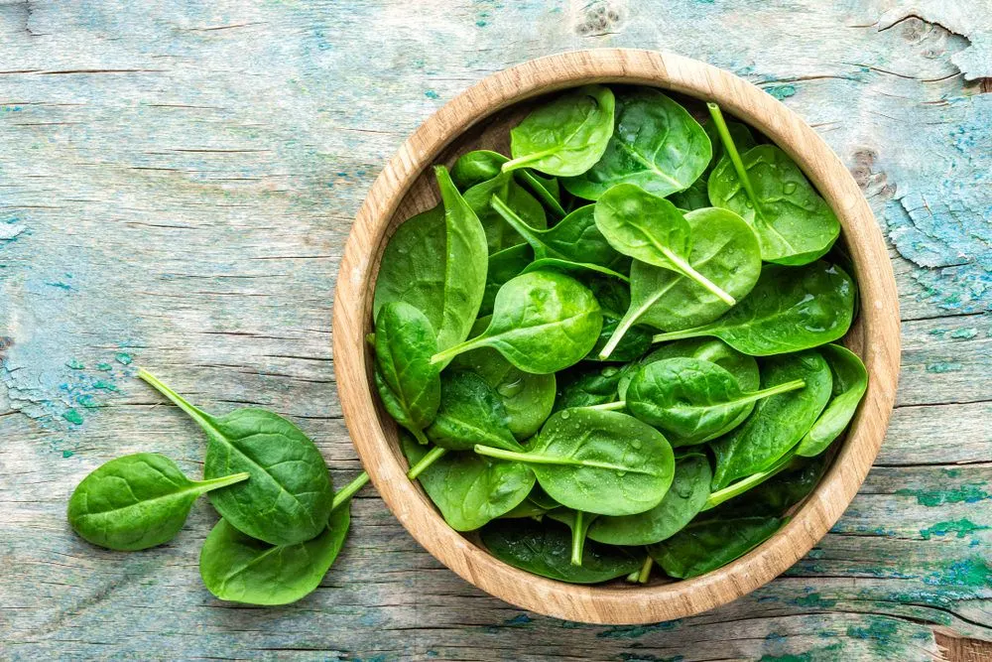
Spinach (Spinacia oleracea) might be prized for its iron content, it is also enriched with vitamins K, A, C, and B9:
- Calories – 6.9
- Vitamin K – 181% of the DV.
- Vitamin A – 56% of the DV.
- Folate – 15% of the DV.
- Vitamin C – 14% of the DV.
- Manganese – 13% of the DV.
- Magnesium – 6% of the DV.
- Iron – 5% of the DV.
To grow spinach in the garden, sow seeds in spring and fall. Spinach is a quick growing, cool season crop that requires six weeks of cooler temperatures from seedling to harvest.
6. Leaf Chicory– 73 / 100
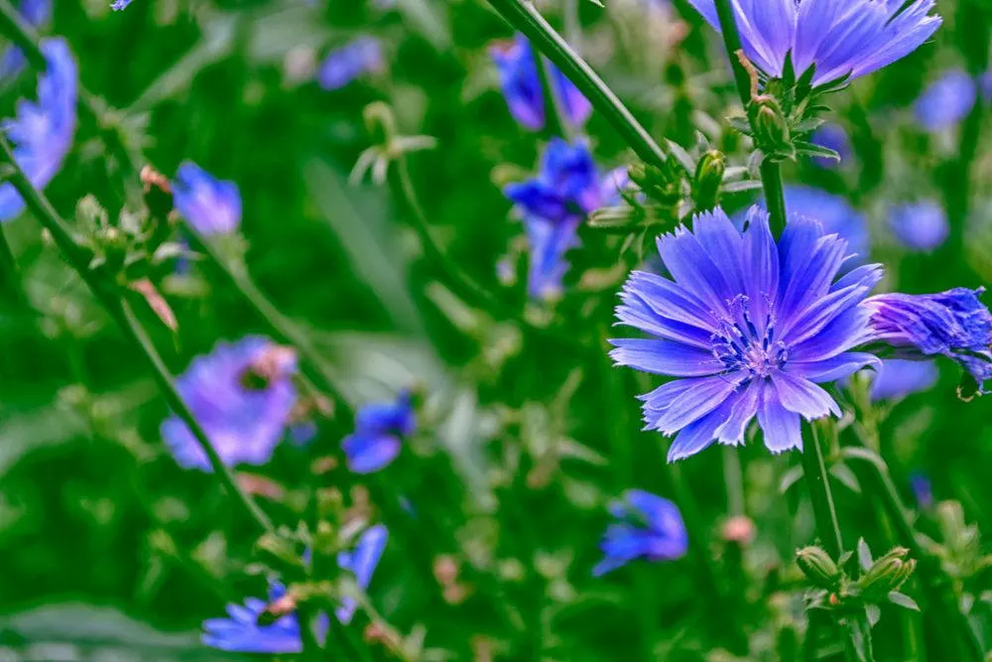
Common chicory (Cichorium intybus) is a perennial herbaceous plant within the dandelion family. Going by a number of names – including blue daisy, blue dandelion, blue sailors, and wild endive – it produces a pretty blue flower, toothed leaves, and thick roots. Not to be confused with close relatives like radicchio (C. intybus Asteraceae) or Belgian endive (C. endiva), common chicory is typically cultivated for its sweet roots that can be ground into a coffee substitute and natural sweetener, and its slightly bitter leaves are used in salads.
Chicory greens are quite good for you too:
- Calories – 6.7
- Vitamin K – 108% of the DV.
- Vitamin A – 33% of the DV.
- Vitamin C – 12% of the DV.
- Folate – 8% of the DV.
- Manganese – 6% of the DV.
- Copper – 4% of the DV.
Common chicory grows in a basal rosette and is very similar in appearance to dandelions. Pluck chicory leaves while they are still young to avoid bitterness that increases as the plant matures.
7. Parsley – 65 / 100
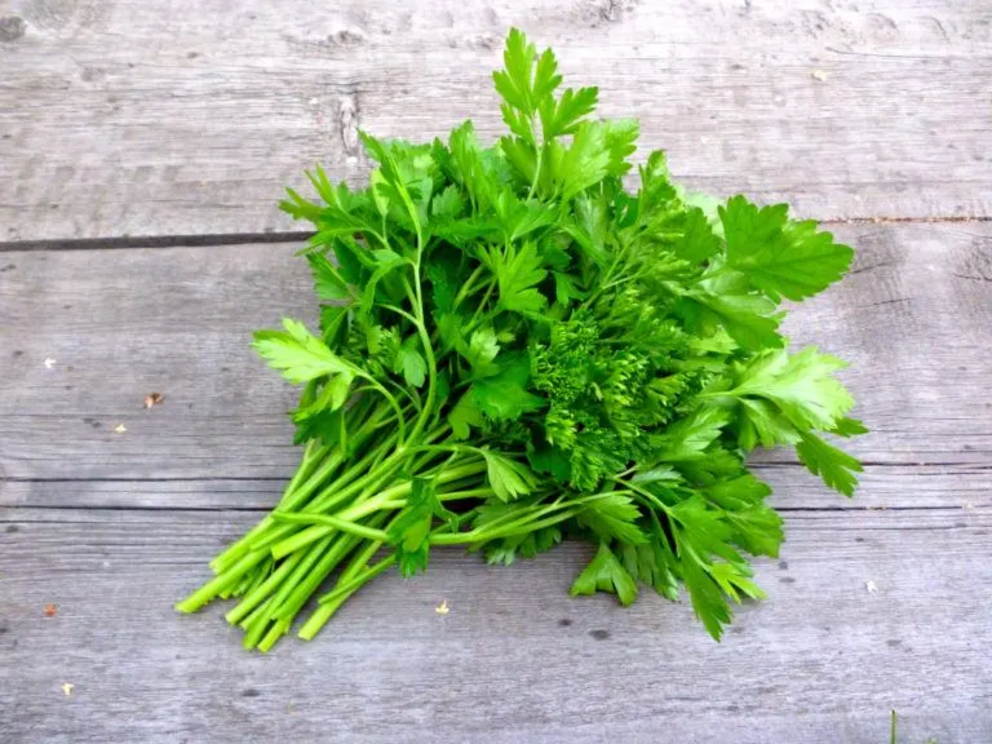
Cultivated far and wide as a spice, herb, and vegetable, parsley (Petroselinum crispum) is enriched with plenty of antioxidants and minerals.
- Calories – 21.6
- Vitamin K – 1,230% of the DV.
- Vitamin C – 133% of the DV.
- Vitamin A – 101% of the DV.
- Folate – 23% of the DV.
- Iron – 21% of the DV.
- Potassium – 9% of the DV.
- Calcium – 8% of the DV.
- Magnesium – 7% of the DV.
Available in curly leaf and flat leaf varieties, parsley can be harvested throughout the growing season by snipping off the outer leaves and allowing the inner stems to mature. Parsley grows best in full sun and warm summer temperatures.
8. Turnip Greens – 62 / 100

Another root vegetable that produces nutrient-rich leafy greens, turnips (Brassica rapa subsp. rapa) are a versatile food that can be mashed, roasted, and pickled. When you grow turnips, don’t toss the greens!
- Calories – 17.6
- Vitamin K – 173% of the DV.
- Vitamin A – 127% of the DV.
- Vitamin C – 55% of the DV.
- Vitamin E – 8% of the DV.
- Vitamin B6 – 7% of the DV.
- Manganese – 13% of the DV.
- Calcium – 10% of the DV.
- Copper – 10% of the DV.
Turnip greens contain a little bit of pretty much every micronutrient, and well worth a spot in the garden. Turnips prefer cooler weather and are ready to harvest in about two months.
9. Chives – 54 / 100

Chives (Allium schoenoprasum) are an ornamental herb that blooms with edible mauve flowers. The grass like leaves can be cut down to the soil for repeated harvests from spring through to fall. Chives are great sprinkled on mashed or baked potatoes, in soups, salads, dips, and dressing, as well as in baked goods like bread and biscuits.
Since it is closely related to garlic and onion, fresh chives have the mild flavor of both of these bulbous plants. Each cup provides a broad spectrum of nutrients:
- Calories – 14.4 calories.
- Vitamin K – 127% of the DV.
- Vitamin C – 47% of the DV.
- Vitamin A – 42% of the DV.
- Folate – 12% of the DV.
- Manganese – 9% of the DV.
- Magnesium – 5% of the DV.
- Iron – 4% of the DV.
Chives are perennial herbs that are especially useful in permaculture gardening. Chive’s blooms are a great source of nectar for pollinators and its scent is excellent for repelling pests naturally. There are many more reasons why chives deserve a spot in your herb garden.
10. Kale – 49 / 100
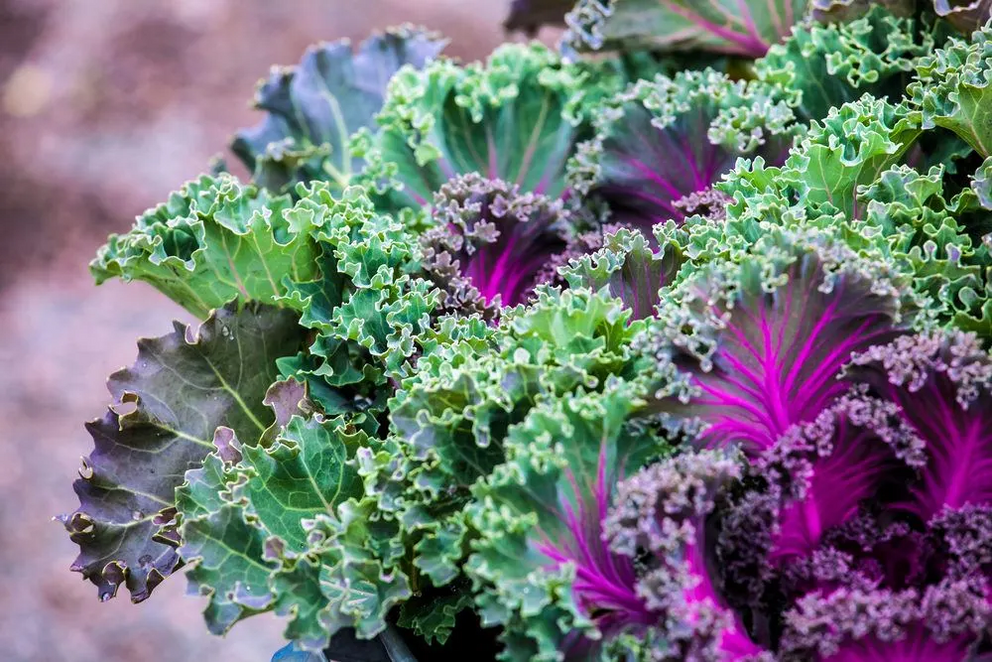
Kale (Brassica oleracea) is a hardy, cool season crop that can withstand temperatures as low as 5°F. In fact, when chilled with moderate frost or a light snow, kale becomes even sweeter.
Beloved by health enthusiasts, kale has a little bit of everything but is especially abundant in vitamins K, A, and C:
- Calories – 33.5
- Vitamin K – 684% of the DV.
- Vitamin A – 206% of the DV.
- Vitamin C – 134% of the DV.
- Vitamin B6 – 9% of the DV.
- Manganese – 26% of the DV.
- Copper – 10% of the DV.
- Calcium – 9% of the DV.
- Potassium – 9% of the DV.
It is also an excellent source of antioxidants lutein, quercetin, kaempferol, and zeaxanthin.
Best of all, kale is really easy to grow. Read our best practices when gardening for kale here.
11. Red Peppers – 41 / 100
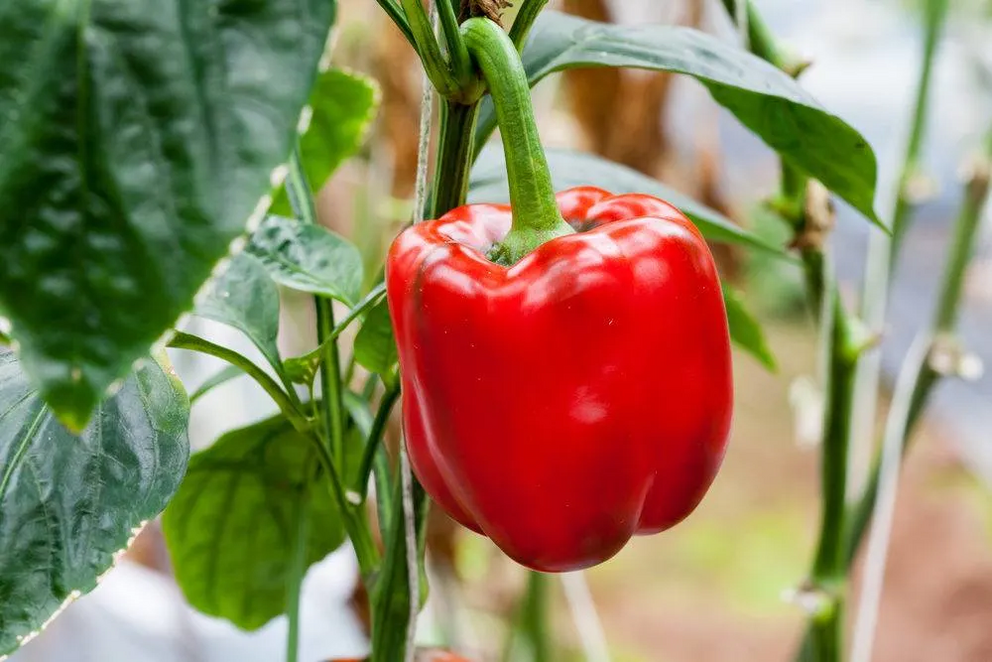
Bell peppers (Capsicum annuum) are available in several vibrantly hued varieties – in green, red, orange, yellow, white, purple, and brown.
But sweet red peppers are the ones that offer the most nutrition per cup:
- Calories – 46.2
- Vitamin C – 317% of the DV.
- Vitamin A – 93% of the DV.
- Vitamin B6 – 22% of the DV.
- Vitamin E – 12% of the DV.
- Vitamin K – 9% of the DV.
- Folate – 17% of the DV.
- Potassium – 9% of the DV.
- Manganese – 8% of the DV.
Read our tips on growing sweet peppers here.
12. Broccoli – 34 / 100

The broccoli (Brassica oleracea) that we know today first emerged in Italy 2,000 years ago. Producing large, tree-like heads surrounded by broad leaves, all parts of the broccoli plant are edible and nutritious. But the florets are especially high in vitamins and fiber, with smaller doses of minerals.
- Calories – 30.9
- Vitamin C – 135% of the DV.
- Vitamin K – 116% of the DV.
- Vitamin A – 11% of the DV.
- Folate – 14% of the DV.
- Vitamin B6 – 8% of the DV.
- Manganese – 10% of the DV.
- Potassium – 8% of the DV.
Best grown in sunny but cool temperatures, broccoli thrives between 65°F to 75°F. If the weather gets too hot, broccoli heads will begin to bolt so timing is everything. Allow for around 70 days to harvest for plantings in spring and fall. Newer heat tolerant varieties like “Gypsy” are more forgiving during unexpected heat waves.
For the rest of this article please go to source link below.

